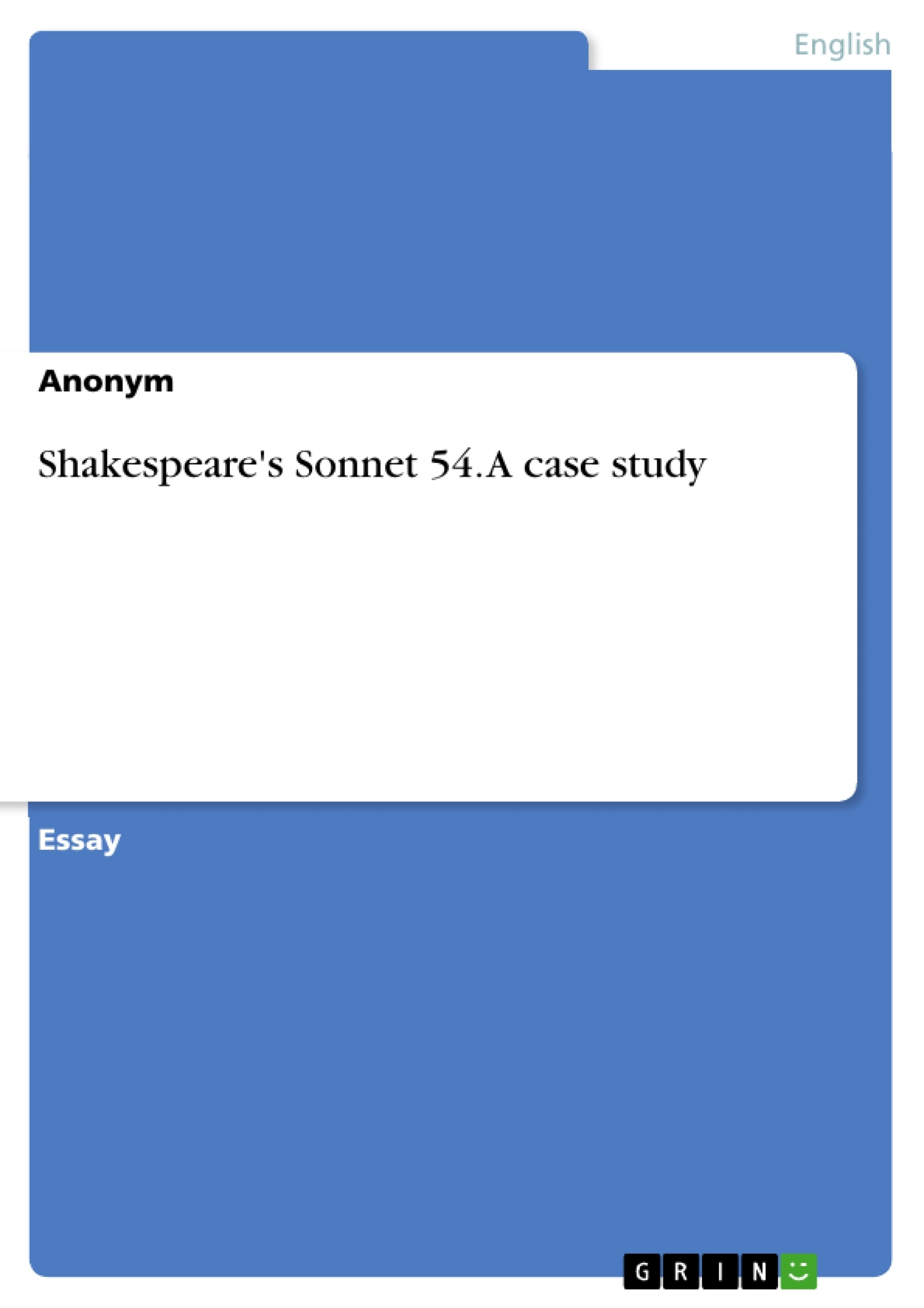The author analyzes the difference between external and internal beauty by comparing the "the sweet scented rose" with "canker blooms" in Shakespeare’s Sonnet 54.
Table of Contents
- Introduction
- The rose
- The sweet scented rose
- The canker blooms
Objectives and Key Themes
This essay analyzes William Shakespeare's Sonnet 54, exploring the theme of beauty and its relationship to truth. The sonnet, addressed to a young man, contrasts the external beauty of the rose with the inner, moral beauty represented by "truth, constancy, loyalty, fidelity" (Landrey 50).
- The symbolic meaning of the rose and the canker blooms
- The distinction between external beauty and inner moral qualities
- The role of truth in shaping beauty
- The use of imagery and figurative language in the sonnet
- The significance of the distillation process as a metaphor for preserving beauty
Chapter Summaries
Introduction
The essay introduces the context of Sonnet 54, highlighting its departure from the traditional Petrarchan sonnet and its focus on the young man's beauty. It outlines the structure of the essay, which examines the symbolic meanings of the rose and the canker blooms.The rose
This section analyzes the first quatrain of the sonnet, focusing on the symbolic meaning of the rose and its connection to truth. The rose is depicted as a symbol of beauty that is enhanced by its sweet scent, representing the "sweet ornament which truth doth give" (Rowse 110, 1.2). The analysis examines the use of figurative language, personification, and polyptoton to convey the relationship between beauty and truth.The canker blooms
This section analyzes the second and third quatrains of the sonnet, contrasting the rose with the "canker blooms" as representations of external and superficial beauty. The analysis explores the differences between the two types of flowers and their respective qualities, particularly their lack of "virtue" (Rowse 110, 1.9) and their inability to be distilled. The canker blooms are depicted as lacking depth and authenticity, symbolizing those who are "unwooed" and "unrespected" (ibid. 1.10).
Keywords
This essay explores key concepts such as beauty, truth, morality, symbolism, imagery, personification, polyptoton, distillation, and the distinction between external and internal qualities. It examines the use of figurative language in Sonnet 54 to illustrate the relationship between beauty and truth, and analyzes the symbolic meanings of the rose and the canker blooms as representations of different types of beauty.
- Citation du texte
- Anonym (Auteur), 2012, Shakespeare's Sonnet 54. A case study, Munich, GRIN Verlag, https://www.grin.com/document/338223



